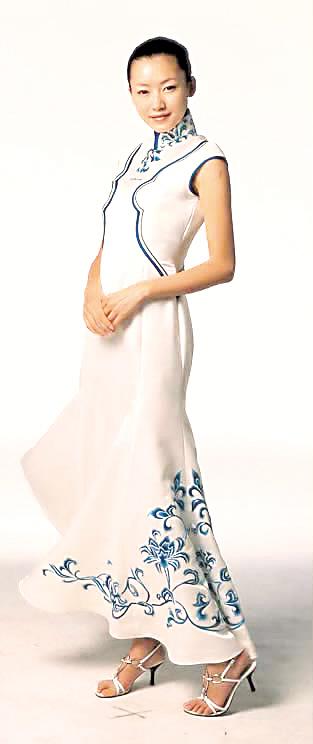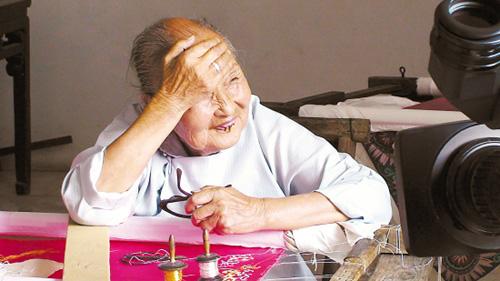China prepared five series of costumes for hostesses to wear at the Beijing Olympics medal ceremonies. All five – "Blue and White Porcelain series", "Sapphire blue series", "Chinese scholar tree's green series", "Jade White series" and "Pink series" – are startling in their own right.
 |
|
Blue and White Porcelain series |
The "Blue and White Porcelain series", inspired by China's blue and white porcelain, was designed for aquatic events. The elegant "Sapphire blue series" featured in gymnastics and other indoor sports events such as fencing. "Chinese scholar tree's green series", served for cycling, shooting, and modern pentathlon. The "Jade White series" cleverly echoed the concept of the jade inlaid Olympic medal, and was used in the National Stadium and all the outdoor sports competitions, and in the equestrian events in Hong Kong. The "Pink series" were worn in boxing, weightlifting, wrestling, and other trials of strength.
The designs for the medal ceremony costumes came from Guo Pei, a professor at the Beijing Institute of Clothing Technology. The quality of workmanship was assured by the use of well-known specialist companies, the best of materials, and production by hand.
Wensli Group, a famous silk company from Hangzhou, produced over 400 costumes of six different types for two of the series, including the "Blue and White Porcelain", the most attractive series.
According to Tu Hongyan, Wensli's executive president of the Board of Directors, "Porcelain and silk are combined in the Blue and white Porcelain set of dress, producing a look of traditional beauty with a contemporary feel."
"All the patterns on the dress were embroidered by hand, but you cannot see the stitching," she said.
The people who embroidered the beautiful patterns were more than 80 artisans, the eldest being 84 and the youngest 68.
 |
|
An embroidery artisan |
Wensli General Manger Zhu Guohua said that once the dress patterns had been confirmed, they decided to use complicated traditional techniques previously used exclusively for court dress. The only craftswomen with the skills to carry out this work are said to be in Suzhou. Tu Hongyan sent out a large team to search in villages famous for their embroidery. The first such craftswoman they found was 84 years old and through her they found several more. An embroidering agency serving Japanese customers finally helped them to gather together all the 80 workers from Jiangsu and Zhejiang.
Tu Hongyan noted that the embroidery work involved a lot of efforts in these garments – 196 hours for a shawl, 148 hours for a flower cummerbund, 218 hours for a skirt border, for example.
(China.org.cn by Hou Xiaoying, August 26, 2008)